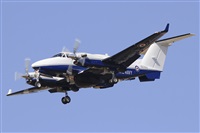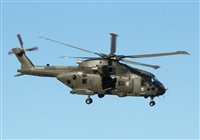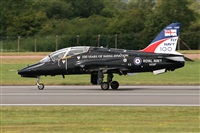 |
|
878
views |
|
|
|
|
 |
|
969
views |
|
|
|
|
 |
|
928
views |
|
|
|
|
 |
|
972
views |
|
|
|
|
 |
|
1027
views |
|
|
|
|
|
|
|
|
|
|
|
|
|
|
|
|
|
|
Remarks |
|
|
Pese al intenso sol sobre Landivisiau, la potente "strobe light" ilumina la canoa de este Sea King ASaC Mk.7 (ZE422 / 92; c/n WA.961), adscrito al 849 Naval Air Squadron de la Fleet Air Arm. Inicialmente designado AEW.7 (por "Airborne Early Warning"), su actual denominación ("Airborne Surveillance and Control") subraya la capacidad de su radar Searchwater 2000AEW de no sólo detectar sino también controlar hasta 400 blancos.
|
|
|
|
|
|
|
|
 |
|
880
views |
|
|
|
|
 |
|
821
views |
|
|
|
|
 |
|
1011
views |
|
|
|
|
|
|
|
|
|
|
|
|
|
|
|
|
|
|
Remarks |
|
|
At Park 4 during the Malta International Airshow 2012
|
|
|
|
|
|
|
|
|
|
|
|
|
|
|
|
|
|
|
|
|
|
Remarks |
|
The Gloster Meteor was the first British jet fighter and the Allies' only operational jet aircraft during the Second World War. The Meteor's development was heavily reliant on its ground-breaking turbojet engines, pioneered by Sir Frank Whittle and his company, Power Jets Ltd. Development of the aircraft began in 1940, although work on the engines had been under way since 1936. The Meteor first flew in 1943 and commenced operations on 27 July 1944 with No. 616 Squadron RAF. Nicknamed the "Meatbox", the Meteor was not a sophisticated aircraft in its aerodynamics, but proved to be a successful combat fighter. Gloster's 1946 civil Meteor F.4 demonstrator G-AIDC was the first civilian-registered jet aircraft in the world.
WL332 was delivered into service 18.4.52 and decommissioned 12.2.69. Now languishing in the Long Marston graveyard....its fate very uncertain.
|
|
|
|
|
|
|
|
 |
|
971
views |
|
|
|
|
 |
|
918
views |
|
|
|
|
 |
|
992
views |
|
|
|
|
 |
|
1059
views |
|
|
|
|
 |
|
879
views |
|
|
|
|
|

